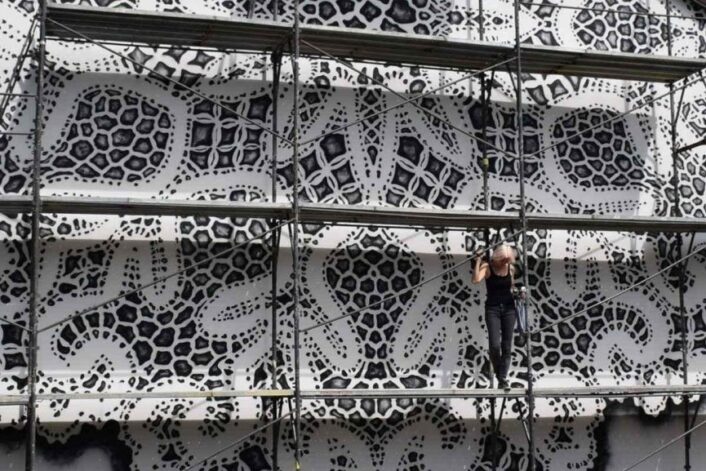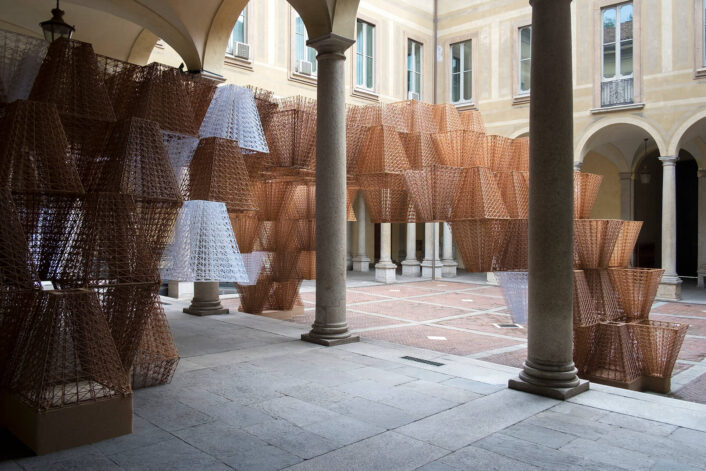Culture
Undulating Moving Dunes installation
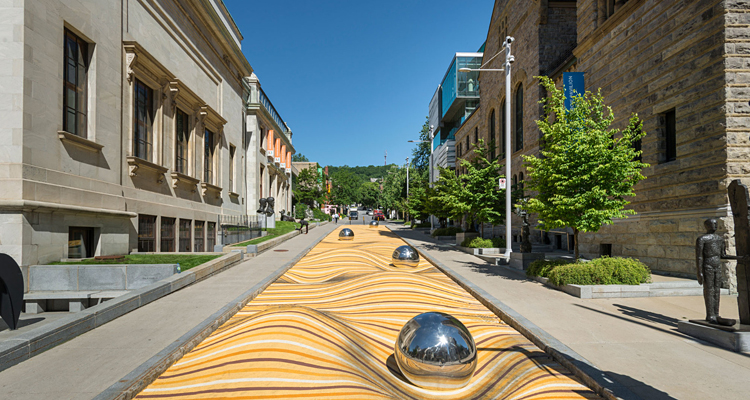
The project worked well in conjunction with the museum’s exhibition at the time, “From Africa to the Americas: Face-to-face Picasso, Past and Present.”
Image courtesy of: The Montrealer
Every year, Montreal’s Musee des Beaux-Arts requests proposals for installations along the museum’s side street. 2018’s winner was by the Canadian design firm NÓS Architects. Aptly titled, “Moving Dunes,” the mural garnered inspiration from the Cubist painters who questioned the role of perspective in visual representation. Specifically, the undulating references distortion as a subject reconfigures itself according to its specific (and changing) position in space.
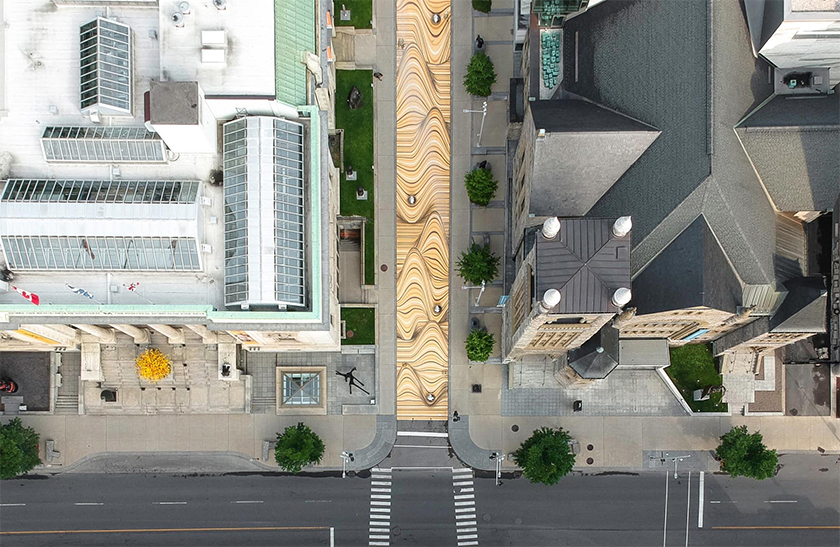
An aerial view…
Image courtesy of: This is Colossal, Olivier Bousquet, Eloa Defly, Raphaël Thibodeau, Alex Lesage, and Charles Laurence Proulx
The public installation is made up of neutral-toned lines that undulate along a walkway. The curvy lines and sand-toned colors allure visitors to move along the installation while watching how the reflective spheres amplify patterns and mirror the nearby views.
As people move along the “dune,” the street appears to transform… as such, shapes are inverted and the ground appears to be alive and breathing. The public installation beautifully introduces the audience to a playful scene via this manipulation of the street’s surface. The large ripples that are generated inspire changing perspectives.
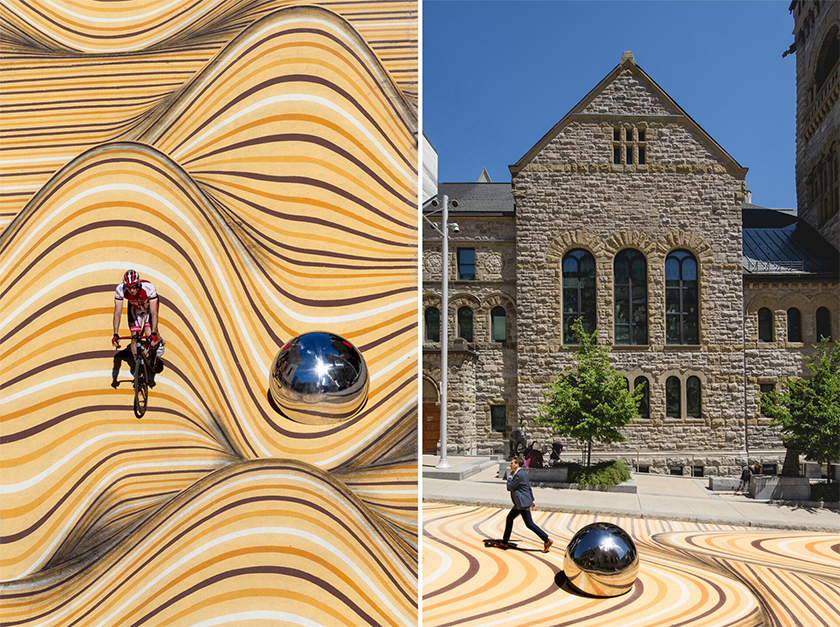
The exact location is a pedestrian zone that borders the Montreal Museum of Fine Art’s Sculpture Garden. This area is popular for both locals and tourists, especially in the warm summer months.
Image courtesy of: This is Colossal, photographed by: Olivier Bousquet, Eloa Defly, Raphaël Thibodeau, Alex Lesage, and Charles Laurence Proulx
In relation to the exhibition’s theme, there were many challenges in the development of this concept. One main problem to overcome was how would emergency vehicles pass through, if necessary. In addition, it was quite challenging to create a high-media impact experience on a very limited budget.
As a walker moves “along” the installation, the shiny, metal spheres reflect the Museum’s varying pavilions, respectively unique in both architecture and age. By means of the installation, NÓS artfully questions the singular point of view of modern pictures that are often frozen in time. The installation is both real and virtual… and meant to awaken all senses.
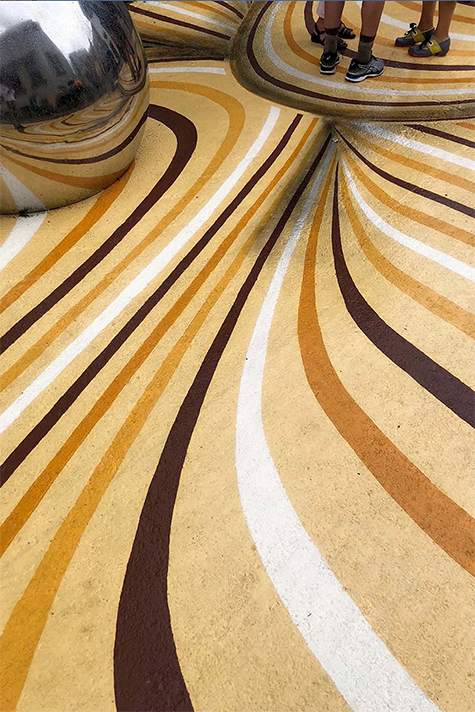
Up-close! Moving Dunes is meant as a mirage in the heart of Montreal.
Image courtesy of: Design Boom
The patterns are painted onto the street and range in color from white to dark brown. Charles Laurence Proulx, who founded NOS in 2016 alongside Gil Hardy said, “We feel that the installation is a kind of public/exterior extension of the exhibition, so the visitors could immerse themselves in an abstract and playful environment, a giant ‘trompe l’oeil’ in reference to cubist techniques.”
With just two entrance points, it is evident that the experience will be vastly different depending on where you enter. NOS hopes that the walker observes the mural from a particular vantage point in order to fully appreciate the changing form. Obviously, a different viewpoint would break the illusion; thus, a completely different experience will be felt. Experiencing it from alternate viewpoints would break the illusion.
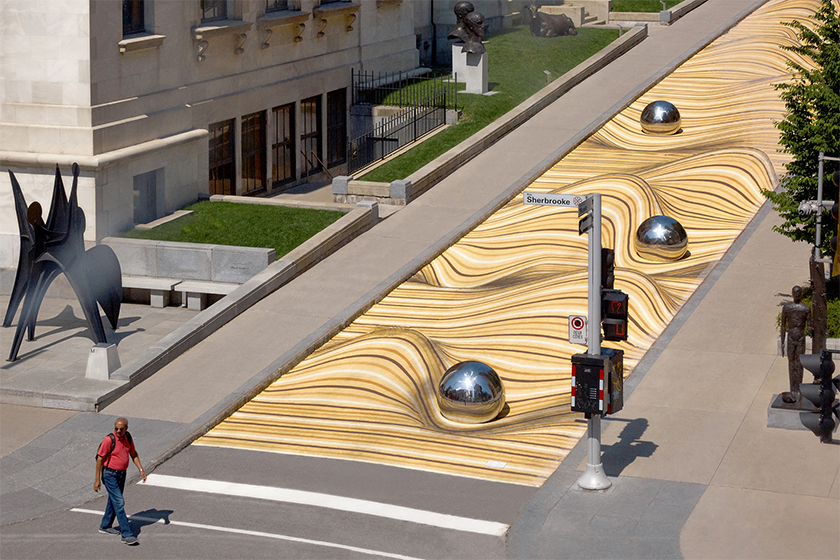
The installation was placed on Avenue de Musee.
Image courtesy of: Fulldes, photographed by: Alex Lesage
Proulx further explains the installation, “Through anamorphosis, we wanted to add virtual amplitude to Du Musée Avenue. This optical illusion creates a sense of imbalance and, in so doing, establishes a new relationship between the observer and his environment; a nod to the approach used by cubist painters inspired by non‑Western art.” Even though the photographs are beautiful, they aren’t able to fully capture the thought-challenging installation. Indeed, creativity at its best!
